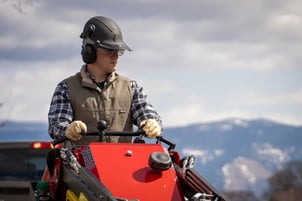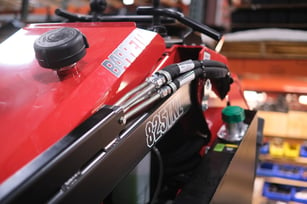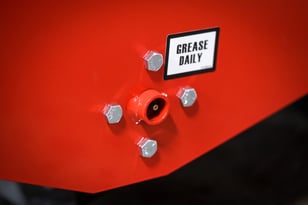Innovative Equipment Engineered to Last
Discover Barreto Manufacturing's 40 years of innovative, durable landscaping equipment, along with expert tips and local highlights for your projects.
Cold Weather Tips
For those of us lucky enough to enjoy a white Christmas, with the snow comes cold weather considerations. Cold weather is hard on engines, pumps, and motors, so running equipment in cold weather requires extra diligence to keep things operating well. Here are a few tips to take care of equipment through winter:
- Don’t Rush a Warm Up
- Operator Comfort & Safety
- Storage & Winterization
- Lubrication & Battery Maintenance
Don’t Rush a Warm Up
Sometimes equipment needs to be operated in freezing conditions - plumbing and outdoor emergencies happen, and when they do, you need to be ready. It’s critical to allow equipment the appropriate amount of time to warm up before operating, especially before operating hydraulic components. If operating in weather below 32 degrees Fahrenheit, we recommend changing hydraulic fluid to ISO 46. If you’re sticking with standard ISO 68, your machine will require extra warm up time.
Always start your equipment at a low idle, and slowly let your engine warm up along with the hydraulic system. Gradually increase the engine speed, and allow 30 minutes for the hydraulic pump to warm up. Listen to the pump, and reduce engine speed if it whines, as this could indicate a lack of hydraulic fluid flow that could damage the pump.
You may need to use a different engine oil for cold weather - refer to your Engine Owner’s Manual for the recommended selection for your use. We don’t recommend using starting fluid, as this could damage your engine.
If your equipment is water cooled and requires coolant like the Barreto 825TKL, check the coolant level and that the coolant rating is approved down to -25 degrees Fahrenheit. Make sure to follow engine manufacturer recommendations. A frozen or cracked block is not covered by the engine warranty.

Operator Comfort & Safety
At the risk of sounding like your mother here, if it’s cold outside - bundle up! We recommend operators wear appropriate boots, gloves, warm clothing, and eye and ear protection that will keep you dry, safe, and comfortable when operating equipment in freezing temps. Cold temperatures are a safety concern, and it’s important to go to a jobsite prepared. Additionally, cold weather gear can cause bulk and limited mobility, so wear close-fitting clothing that won’t get snagged or impede necessary movement.

Storage & Winterization
Depending on the type of equipment being run, fuel type must be considered when making storage and winterization decisions. Diesel can gel in freezing temperatures, so either keep equipment stored in a temperature controlled environment, or add a fuel stabilizer like Stabil. Stabil is available in formulations for both gas and diesel fuel types. Follow engine manufacturer recommendations for selecting the appropriate fuel stabilizer. We recommend storing equipment indoors whenever possible, as this reduces wear from the elements and reduces warm up times.
Give equipment a good clean before long term storage to clean mud or salt from exteriors that could rust, and dry equipment well before covering - excess water can still freeze in components and cause problems later on. For long term storage tips check out our blog here on Preparing Equipment for Winter.

Lubrication & Battery Maintenance
Proper lubrication will keep moving parts operating smoothly, and it is especially important in cold temperatures. Grease keeps moisture out and prevents rust. Routinely grease all grease points according to manufacturer recommendations.
Follow battery manufacturer instructions, but most batteries will need to be attached to a battery tender in cold weather to prevent energy loss. This is the easiest and fastest option, and it allows for quick detachment should you need to use the equipment. The other option is to pull the battery from the equipment entirely, though keep in mind that this is a better solution for long term storage and requires more time to reinstall.
Equipment use in winter comes with unique challenges, though it is certainly not impossible and sometimes necessary. Follow your Operator’s Manuals for the most detailed instructions for equipment use in cold weather, and with a little extra care you can have your equipment working for you year-round.
